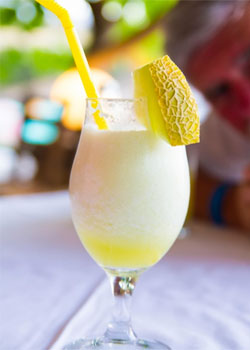Establish Drink and Cocktail Prices
When taking into consideration how many different types and brands of liquors are used, it can seem quite overwhelming to begin setting a standard for your pricing. Fortunately, it's just simple math that will be applied across your entire drinks menu.
How to Price Bar Drinks
You can follow these steps to help you estimate the price of the drinks at your establishment.

- Calculate the liquor cost. You can use the following formula to help get to this number: Bottle Price / Ounces in Bottle = Liquor Cost per Ounce
- Calculate the pour cost or beverage cost. You can use the following formula to help get to this number: Cost to Make the Drink / Price You Sell It for = Pour Cost
- Most locations will set the pour cost at 20% to 25%, while others will use 22% for wine, 20% for beer, and 14% for liquor. You can adjust the percentage to what works best for your establishment.
- Calculate the drink price. You can use the following formula to help get to this number: Liquor Cost / Pour Cost in Decimals = Drink Price
- Factor in the garnish prices. You can do this similarly to how you calculate the liquor cost and price out each individual ingredient, or set a flat rate that is added on to the drink price.
- Factor in the shrinkage variance. Most bars will add in an additional fee of approximately 20% to cover the cost of lost product due to expiration or damage.
- Round to the nearest quarter. The number you get after you complete your calculations may not be a well-rounded number. To make the price more visually appealing, round to the nearest quarter to create a cleaner drink menu.
- Evaluate and adjust. The prices you come to may not always be the most cost-effective price for your demographic. Make adjustments and track the impact it has on your clientele to find the best menu pricing for your establishment to be profitable.
Drink Cost Breakdown in Practice
We’ll walk through the pricing breakdown of a basic drink to provide a visual of the calculation above. To start, we’ll say that a 25-ounce bottle of liquor costs $22.
- Liquor cost: $22 purchase cost / 25 oz. per bottle = $0.88 per ounce
- Pour Cost: We’ll use 20% as a standard.
- Drink Cost: $0.88 liquor cost / .2 pour cost = $4.40
- Garnish Cost: We’ll use a flat rate of $0.50. The drink total is currently $4.90 with the drink cost and garnish cost combined.
- Shrinkage Cost: Using the shrinkage rate of 20%, you’ll want to multiply the drink total by .2 and add that amount to the price.
- $4.90 drink total x .2 shrinkage = $0.98 shrinkage cost
- $4.90 drink total + $0.98 shrinkage cost = $5.88 new drink total
- Round to the Quarter: The final drink price is $6.00.
Understanding that most drinks do not consist of just one type of liquor or ingredient, you’ll want to price out your ingredients the same way you calculated the liquor cost and add them all together. Multiply the liquor cost accordingly to how many ounces of that particular liquor you used in the cocktail. You would then use that recipe total in place of the liquor cost during the drink cost step.
Four-Tier Liquor Pricing
Liquor pricing will usually fall into a four-tier organizational system that can help you adjust your pour cost according to the liquor quality.
- Well: These brands will usually sit in the well behind the bar. Well drinks are made with the cheapest liquors in your establishment and usually mixed with multiple liquors and drink mixes. They will have the highest pour cost, set at approximately 30%.
- Call: These brands are the most popular brands in your establishment and are usually located directly behind the bartender. Customer can usually call them by name when asking for a drink. They will have a pour cost set at approximately 25%.
- Premium: These brands will usually be located on the lowest shelf behind the bar and will be the highest quality certain brands have to offer. They will have a pour cost set at approximately 20%.
- Super-Premium: These brands are considered to be top-shelf bottles and will be the highest quality liquors in your establishment. They are generally liquors that have been aged and distilled. They will have the lowest pour cost, set at approximately 15%.
Organizing your bottle brands into these four categories can provide a quick reference system when setting drink prices.
Creating Standard Recipes
Establishing standard recipes for each drink is important to ensure consistency and quality. If each bartender makes cocktails a different way, your customers aren't only receiving different types of margaritas, but your effort to price the beverage is essentially useless.
When standardizing recipes it's also important to stress the necessity of avoiding over-pouring to your bartenders. Over-pouring costs bars thousands of dollars per year, but you can help prevent that by adding measured pourers behind the bar.
For full article click the link below

No comments:
Post a Comment